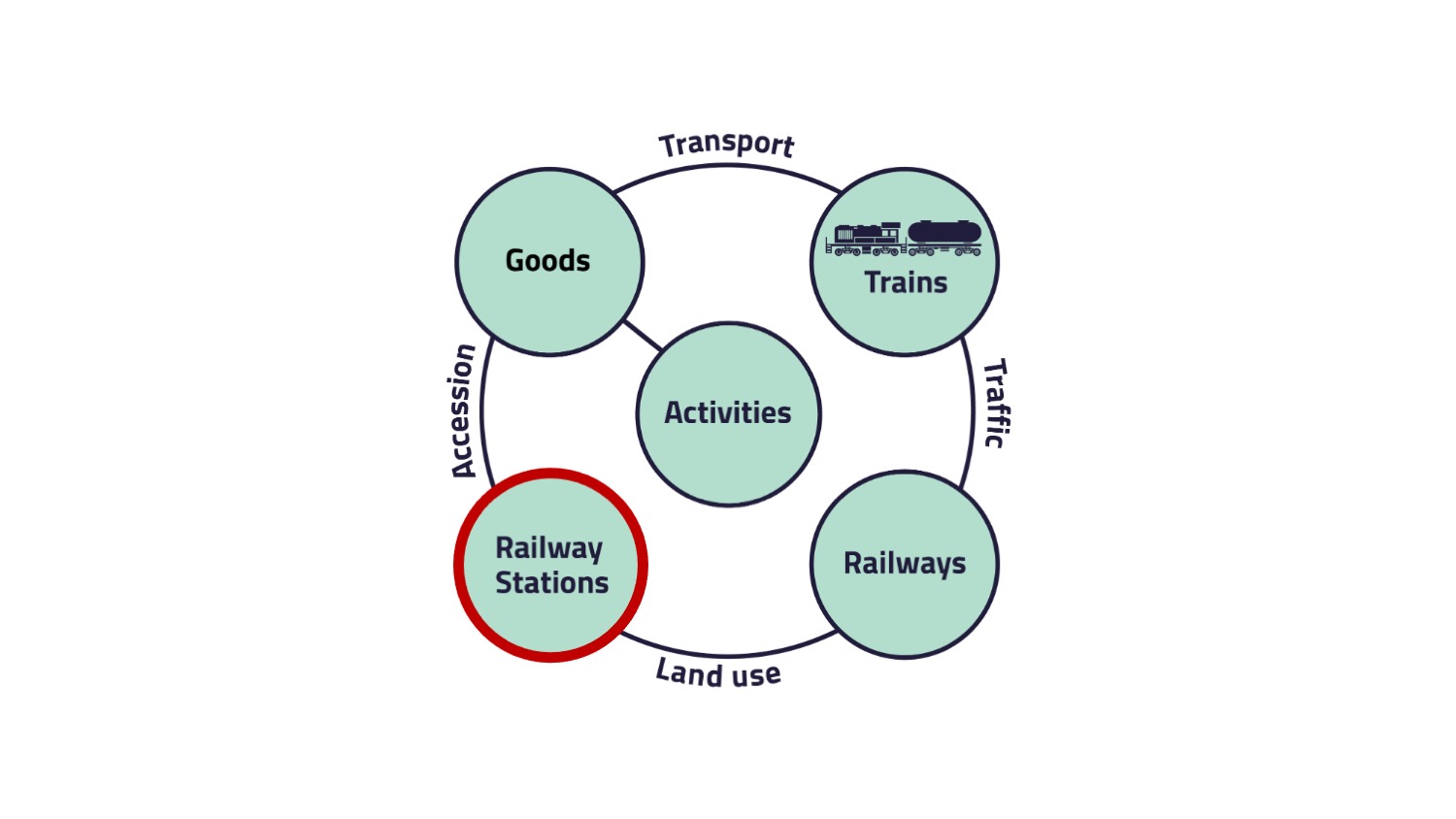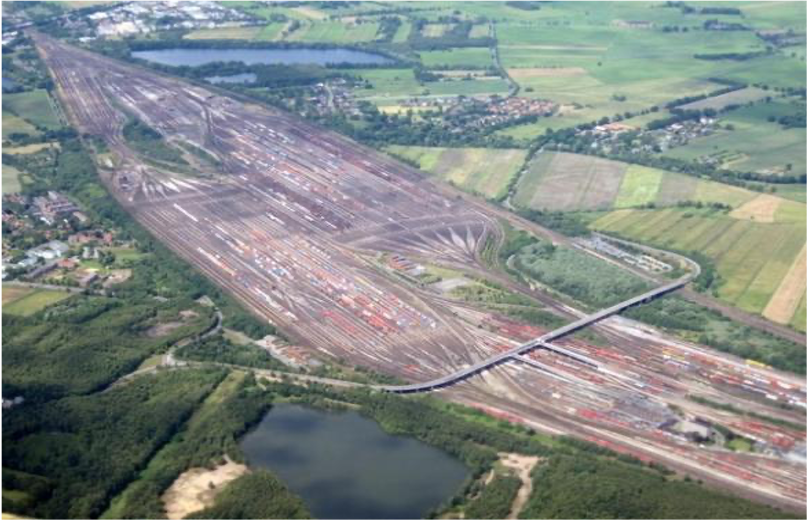Rail Transport System
6. Railway Stations
This page deals with the last element of the conceptual system model facilities. In the rail transport system, the facilities are called "Railway Stations".

The facilities are often intermodal, i.e. there is rail and/or waterway access. Examples are ports or freight villages. In Germany, only 2,318 company sites had direct access to rail infrastructure in 2023.
In the transport chain without block trains, marshalling yards are often used to form regional, national and international freight trains. Near Hamburg is the largest marshalling yard in Europe called Maschen. Some key facts about the Maschen marshalling yard:
In the transport chain without block trains, marshalling yards are often used to form regional, national and international freight trains. Near Hamburg is the largest marshalling yard in Europe called Maschen. Some key facts about the Maschen marshalling yard:
- In operation since 1977, underwent major modernization between 2009 and 2014.
- Largest marshalling yard in Europe for regional, national and international freight train formation.
- Hub for hinterland transport of maritime ports of Hamburg and Bremerhaven as well as Scandinavia traffics.
- Currently, around 1 million freight wagons are treated (150 trains / up to 4.000 wagons daily).
- Maschen is a hump yard.
- Lead track on a hill (hump) that an engine pushes the cars over. Cars are uncoupled just before the hump, and roll by gravity into their destination tracks.

The relation between the railway stations and the goods is called accession.
Accession
The accession to the rail network is limited. While nearly every company has access to the road network, in 1994 11.742 private sides had a connection to the rail network. Afterwards, a lot of private sides decided against a private connection to the rail network, leading to a reduction of 80 % of private sides till the year 2012. In 2023, there were only 2.318 private sides left.
This was the last element of the conceptual system model. On the next page you will find a brief summary and the advantages and disadvantages of the rail transport system.
Literature
Literature
Allianz pro Schiene e.V. (2019): Güterverkehr-Mehr Verkehr auf die Schiene. URL: https://www.allianz-pro-schiene.de/themen/gueterverkehr/ (last access: 30.03.2022).
Deutsche Bahn AG (2019): Rangierbahnhof Maschen. URL: https://www.deutschebahn.com/pr-hamburg-de/DB-im-Norden-1/Regionale-Themen/rbf_maschen-6121248 (last access: 30.03.2022).
Deutscher Bundestag (2019): Gleisanschlüsse im deutschen Bahnnetz. Drucksache19/9305. Antwort der Bundesregierung auf die Kleine Anfrage der Abgeordneten Sabine Leidig, Dr. Gesine Lötzsch, Lorenz Gösta Beutin, weiterer Abgeordneter und der Fraktion DIE LINKE. – Drucksache 19/8731 –. URL: https://dserver.bundestag.de/btd/19/093/1909305.pdf (last access: 30.03.2022).
Deutscher Bundestag (2019): Gleisanschlüsse im deutschen Bahnnetz. Drucksache19/9305. Antwort der Bundesregierung auf die Kleine Anfrage der Abgeordneten Sabine Leidig, Dr. Gesine Lötzsch, Lorenz Gösta Beutin, weiterer Abgeordneter und der Fraktion DIE LINKE. – Drucksache 19/8731 –. URL: https://dserver.bundestag.de/btd/19/093/1909305.pdf (last access: 30.03.2022).
Flämig, H., Sjöstedt, L., Hertel, C. (2002): Multimodal Transport: An Integrated Element for Last-Mile-Solutions? Proceedings, part 1; International Congress on Freight Transport Automation and Multimodality: Organisational and Technological Innovations. Delft, 23 & 24 May 2002. (modification of Sjöstedt 1996)
